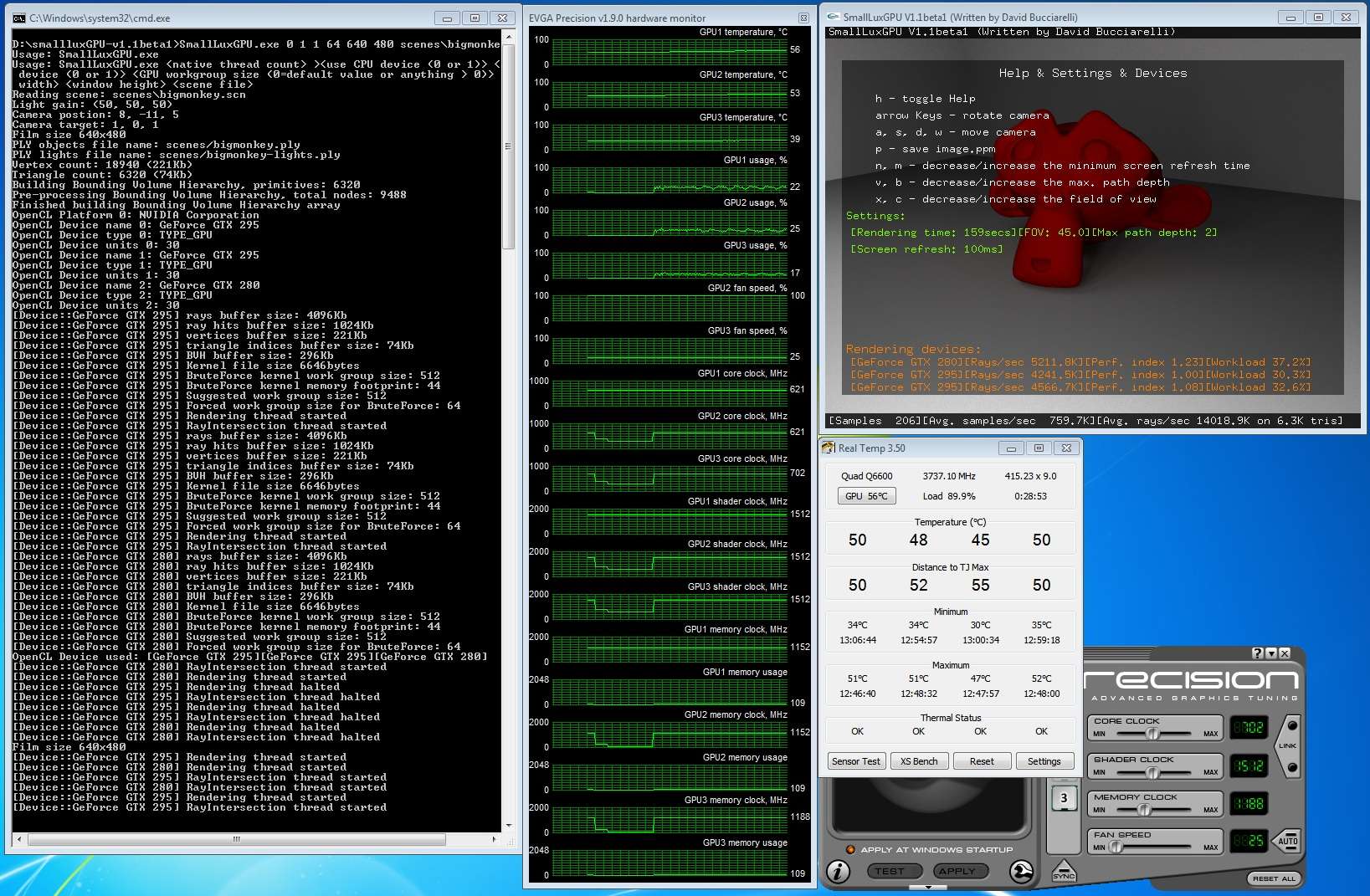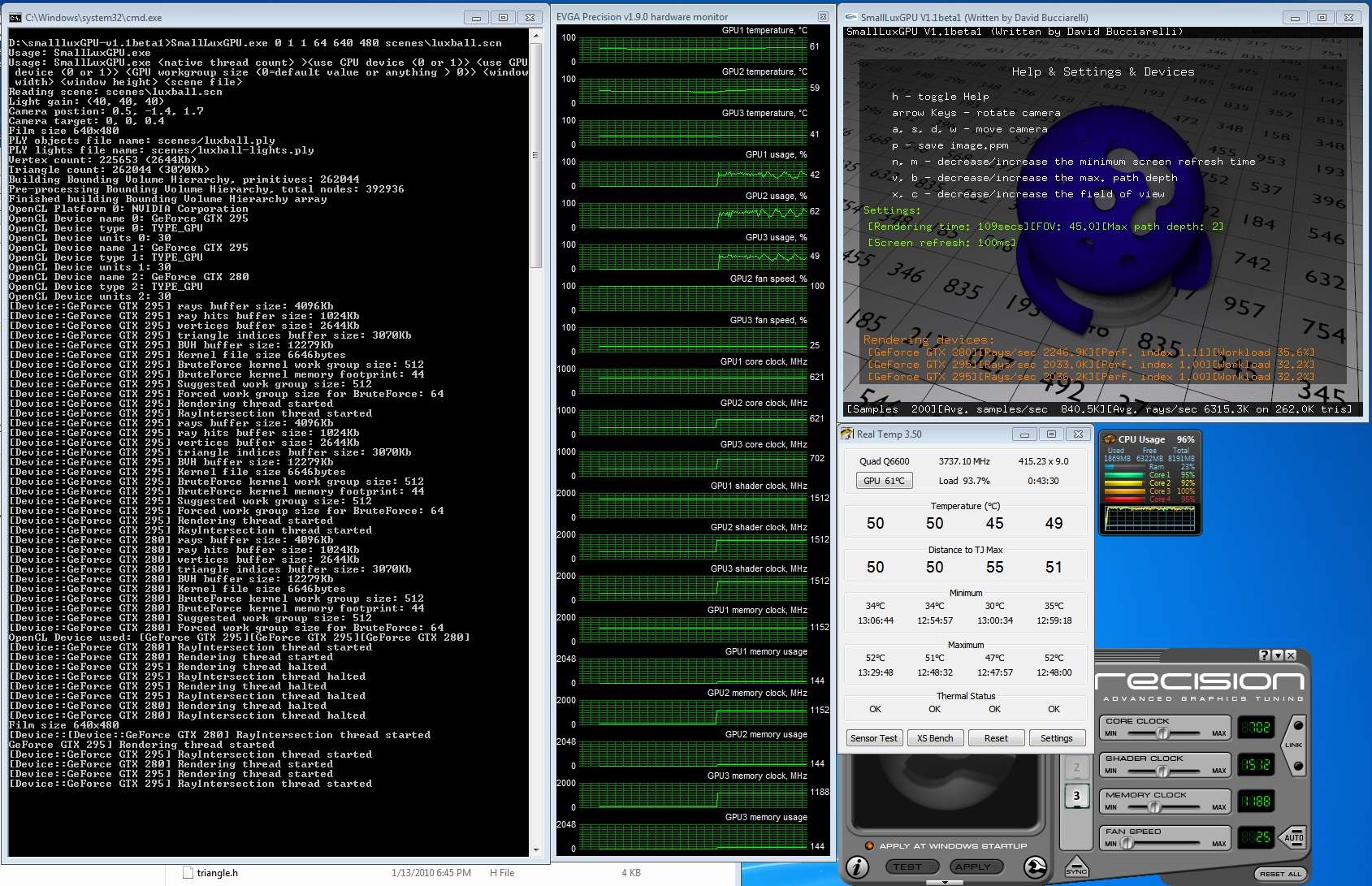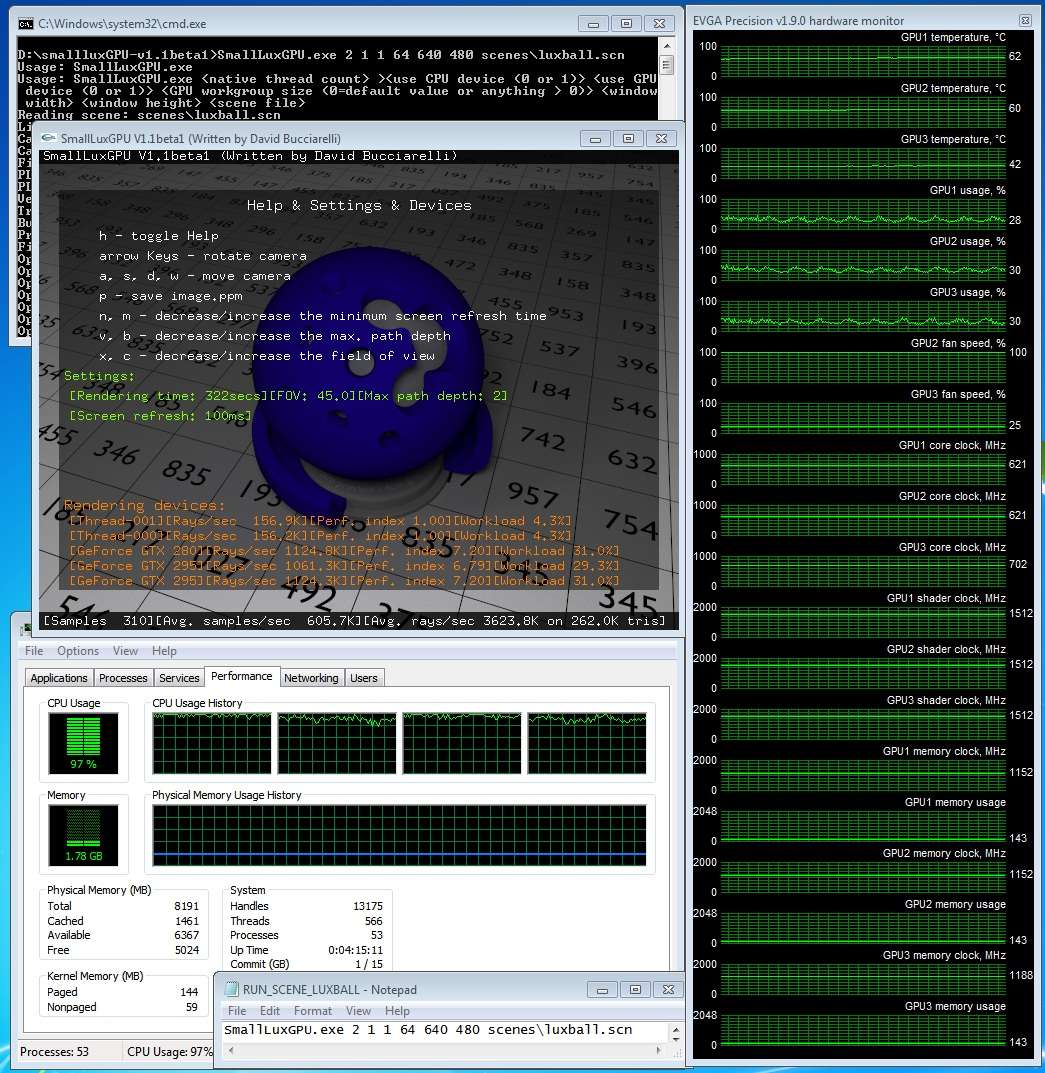Talonman, you may be interested in trying http://davibu.interfree.it/opencl/smallluxgpu/smallluxgpu-v1.1beta1.tgz (note: the pre-compiled Windows executable there is slightly outdated and the camera movements could be a bit slow).
SmallLuxGPU is showing some nice progress with the capability to run on multiple OpenCL GPUs/CPUs and native threads (i.e. you can use the CPU even if you don't have an OpenCL CPU device like with the NVIDIA). This is SmallLuxGPU running on my brand new PC with 8 native threads (i.e. hyper-threading) and 1 GPU:

It looks like (thanks to a lot simpler kernel when compare with SmallptGPU) it works well with NVIDIA hardware, check this screenshot of Jens's MacPro with an 8800GT:

The screen shot posted by Eros on Luxrender forums is particularly interesting:

The Eros's screenshot is particularly interesting because it shows some quite good result achieved with GTX 295. Overall, I really like the capability to run on about any OS and on any number of CPUs and GPUs available
SmallLuxGPU is showing some nice progress with the capability to run on multiple OpenCL GPUs/CPUs and native threads (i.e. you can use the CPU even if you don't have an OpenCL CPU device like with the NVIDIA). This is SmallLuxGPU running on my brand new PC with 8 native threads (i.e. hyper-threading) and 1 GPU:
It looks like (thanks to a lot simpler kernel when compare with SmallptGPU) it works well with NVIDIA hardware, check this screenshot of Jens's MacPro with an 8800GT:
The screen shot posted by Eros on Luxrender forums is particularly interesting:
The Eros's screenshot is particularly interesting because it shows some quite good result achieved with GTX 295. Overall, I really like the capability to run on about any OS and on any number of CPUs and GPUs available








